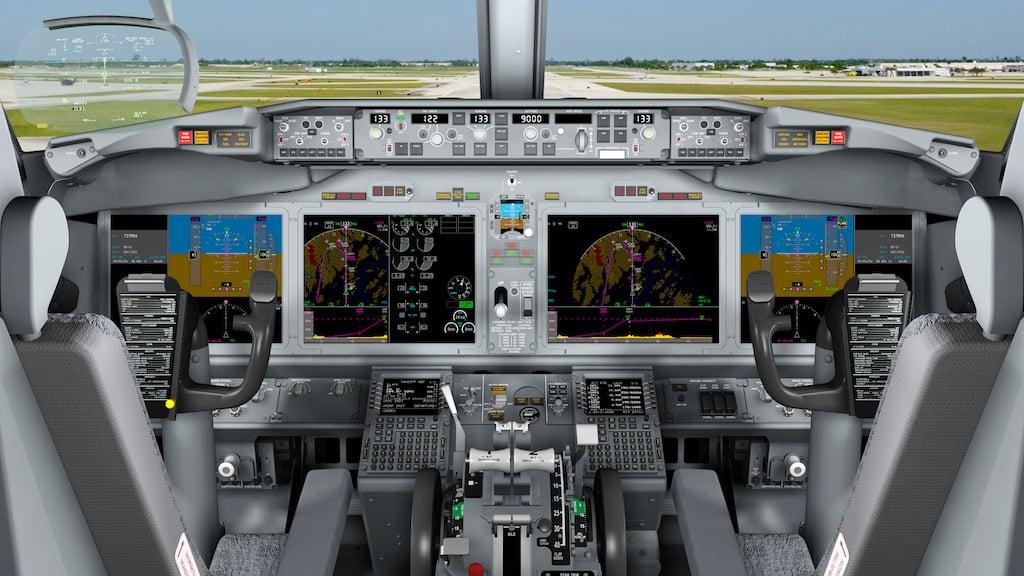
Basic principles of autopilot engagement are misunderstood.
On Oct. 9, 1999, a Falcon 900B was en route from Portland, Oregon, to Grand Rapids, Michigan. The aircraft was cleared to descend to 11,000 ft. As it descended through 11,400 ft. at 355 kt., the captain observed on the primary flight display that the autopilot had shifted, for reasons unknown to him, into the pitch-hold mode.
The captain reported that when he was at about 11,400 ft. MSL, it appeared the jet was going to descend below the assigned altitude. The first officer, who was the pilot flying in the left seat, reported that he pulled back on the jet’s yoke to initiate the level off without disengaging the autopilot. He reported that when he relaxed the back pressure on the yoke, the aircraft pitched nose-down violently and a series of three-to-four pitch oscillations occurred before it was brought under control. The aircraft load factors reached magnitudes between +3.3G and -1.2G.
The flight attendant was not wearing a seat belt at the time of the incident and suffered a broken shoulder that required surgery. Neither the autopilot's pilot manual nor the aircraft’s flight manual contained a Warning, Caution or Note that explicitly stated not to manually override the autopilot.
The NTSB investigation ruled that the probable cause of the incident was the copilot’s improper use of the autopilot system while leveling the flight from descent, resulting in an inadvertent pilot-induced pitch oscillation of the aircraft. A factor was the flight attendant not wearing a seat belt at the time of the occurrence.
On Oct. 18, 1999, Dassault Aviation issued Service Newsflash No. 52 for the Falcon 900, reminding pilots of the following “basic piloting techniques when flying with the autopilot engaged.”
- Do not manually apply control yoke forces in an attempt to control the aircraft.
- If aircraft manual control is required or desired, hold the control yoke and disengage the autopilot using any of the pushbuttons available for disconnection.
- Manually control the aircraft as required.
- Trim the aircraft and re-engage the autopilot if desired.
Deficiencies in Training Create Gaps in the Safety Layers
Each aircraft model has unique momentum characteristics, handling characteristics, flight control characteristics and limitations, system operating characteristics, structural limitations, and procedures for normal and abnormal conditions. A certain procedure or practice that applies in one aircraft can lead to catastrophic consequences in a different type of aircraft.
This was tragically demonstrated recently with revelations that the procedure to disable the Boeing 737 MAX’s Maneuvering Characteristics Augmentation System (MCAS) was significantly different from the simple steps to stop a runway trim in the rest of the legacy 737 models. Boeing’s legend as a premier aircraft manufacturer will forever be blackened by the many decisions that led to the certification and production of a flight control system modification that was not adequately discussed in flight crew training manuals nor given the proper hands-on attention in simulator training.
The Romanian accident report from Part 1 of this article contained another important recommendation that needs to be emphasized. It recommended: “The JAA and FAA should make sure that training programs and documentation of all operating airplanes provide sufficient information and illustrative examples of aircraft-pilot coupling and of possible unsafe crew-automation interactions.”
This is particularly noteworthy as evidenced by the airlines that gave their pilots a 1-hr. training module on the transition to the Boeing 737 MAX under the theme of “You can learn the differences from this iPad module.” This was not in-depth learning and comprehension. Important topics, especially those dealing with the control of an aircraft, must be properly trained. The aftermath of the MAX investigations and re-certification processes revealed the necessity for sufficient hands-on exposure in a simulator. This is particularly pertinent since the majority of pilots tend to learn by actually doing a procedure as opposed to reading 3-in.-thick aircraft manuals.
As stated at the beginning of this article, these two accidents reveal the pervasive nature of negative habit transfer. It especially afflicts those with plenty of experience and deeply ingrained habit patterns. This problem will pop up when transitioning to an aircraft that has different handling characteristics or different procedures. It is particularly troublesome when time pressure demands quick performance, such as a last-second go-around or when the control margins of an aircraft have deteriorated.
Our habit patterns from the past for an upset recovery may actually hasten the aircraft’s departure into a full loss of control. In a future article, we will explore many examples in which highly experienced pilots, some of whom were Top Gun instructors or leaders of elite, highly classified military fighter squadrons, applied flight control movements that were appropriate to high performance aircraft they had flown in the past but which caused loss-of-control accidents in civilian aircraft.
How much training does it take to “un-do” past habits to adjust one’s technique to the handling characteristics of another aircraft? That is an important question left for another day. Instead of relying on opinions, you will be presented with the work of the neuroscientists who provide critical guidance to Olympic athletes making micro-adjustments to their movements in the pursuit of error-free winning performances under crushing pressure. We will compare those lessons to examples from aviation training in which our industry is woefully behind the learning curve.
See Negative Habit Transfer, Part 1, https://aviationweek.com/business-aviation/negative-habit-transfer-part…
